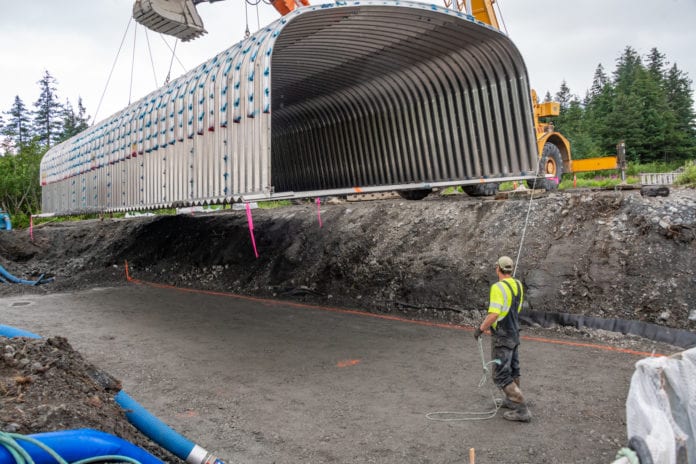
A project of the Cordova Ranger District Copper River Watershed Enhancement Partnership has won the Chugach National Forest 2020 Chief’s Award for its work to identify and replace under-sized culverts in the Copper River watershed.
Chugach National Forest officials cited the project as “a shining example of a collaborative approach to landscape-scale improvement of watershed health.”
By identifying and replacing those undersized culverts, the partnership is actively restoring the productivity of national forest system land and rejuvenating public access routes, they said.
The Copper River Watershed Enhancement Partnership was one of 11 winners selected from nearly 60 nominations.
Recipients were to be recognized in online ceremonies in mid-November.
The Copper River Delta is recognized as critical wetland for fish and wildlife, which provide for subsistence, commercial and sport harvest of salmon. Under-sized culverts alter this habitat and can block migrating salmon, thus reducing productivity and resource abundance. They also require more frequent maintenance and may fail during floods.
The project also benefits the local economy by providing construction jobs.
The partnership gave priority to culvert replacement, developed a project plan and was awarded a grant to implement the work. This year three culverts were replaced, and 10 additional stream crossings are now on-schedule for restoration between 2021 and 2023.
Project partners include the USDA Forest Service Chugach National Forest, Cordova Ranger District, Copper River Watershed Project National Oceanic & Atmospheric Administration, U.S. Fish & Wildlife Service, Alaska Department of Fish and Game, and the Alaska Department of Transportation and Public Facilities.
Project funding came from the Exxon Valdez Oil Spill Trustee Council, the Alaska Departmentof Transportation and in-kind contributions from partners.














